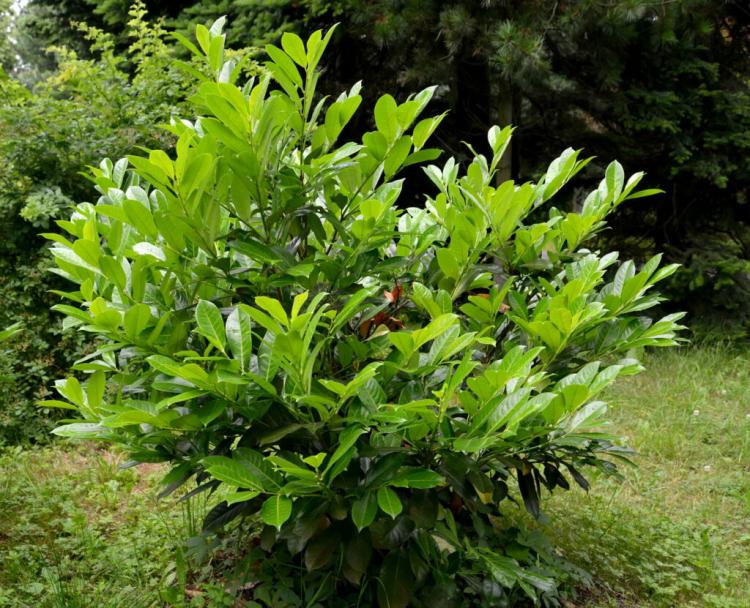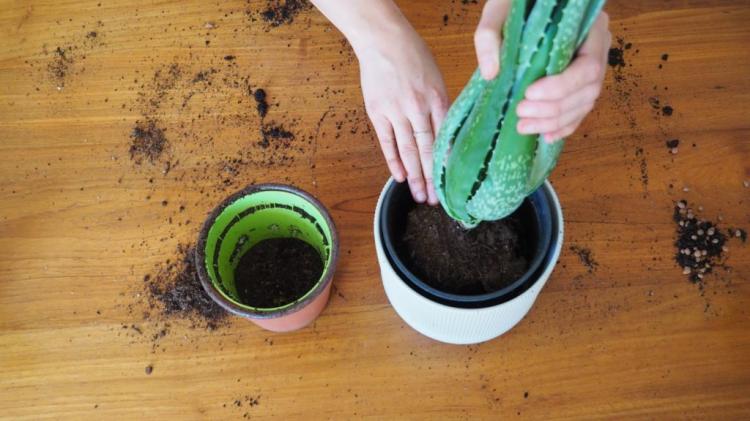Violin fig: care, location & propagation of Ficus Lyrata
It is almost obvious where the violin fig ( Ficus lyrata ) got its name from. She beautifies our apartments with her splendid foliage. We have put together everything you need to know about the violin fig tree for you.

The shape of the leaves immediately reveals where the violin fig’s name comes from [Photo: Yaoinlove / Shutterstock.com]
In addition to the right location and the right care, the violin fig above all needs a lot of space, as it can reach stately sizes. But then it is an absolute eye-catcher and can steal the show from other indoor plants. We provide the most important information on care, location and propagation.
Violin fig: size, growth and origin
Table of Contents
The violin fig ( Ficus lyrata ) is a small tree in the genus of figs ( Ficus ) and belongs to the mulberry family (Moraceae). Its natural range is in the West African tropics. Since it is very popular due to its imposing appearance, the plant can now also be found in other regions and is also often kept as a houseplant. Due to its close relationship to the rubber tree ( Ficus elastica ), the violin fig is also known as the violin rubber tree. Learn how to prune a rubber tree.
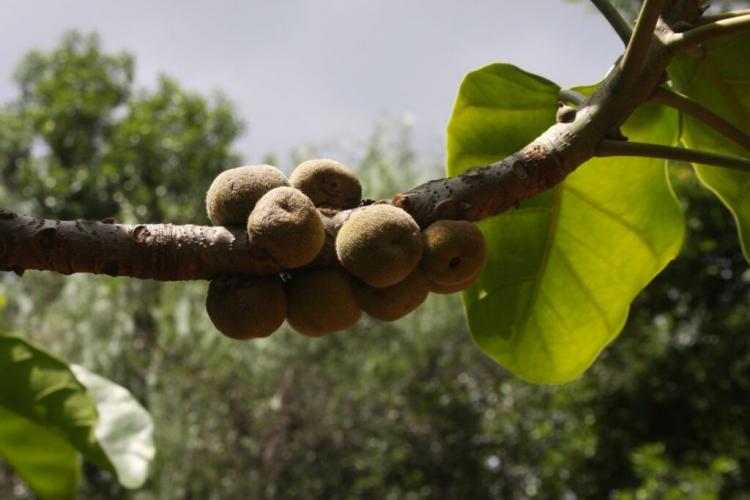
The typical fig fruits of Ficus lyrata [Photo: Bettina Calder / Shutterstock.com]
In tropical regions, the violin fig grows very large and reaches heights of up to 25 meters. As a container plant, the violin ficus can reach heights of up to 4 meters, provided that its location offers it enough space. Usually it grows straight upwards with one shoot, but can also grow bushier through pruning. As a small tree, the violin fig develops a trunk that lignifies over time. As a houseplant, the violin fig almost never blooms; inconspicuous, small flowers develop in nature. After pollination, the typical fig fruits emerge. But even without flowers and fruits, the violin fig looks great. Its huge, up to 45 centimeters long leaves are leathery, shiny dark green on the top and light green on the underside with clear leaf veins. With the wavy edge of the leaf, the shape is reminiscent of the eponymous instrument. The violin ficus is also considered to be particularly air-purifying.
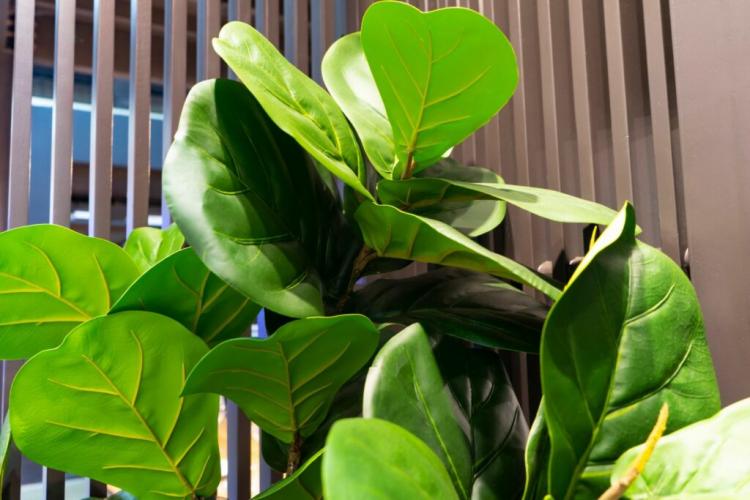
Several specimens in a pot make the violin fig appear bushier [Photo: Stor24 / Shutterstock.com]
The most beautiful varieties
There are different varieties of the violin fig that show differences in growth form and leaf color.
- Ficus lyrata ‘Bambino’ : As the name suggests, the violin fig ‘Bambino’ is not as big as the actual species, but rather remains small and compact.
- Ficus lyrata ‘Compacta’ : This variety also remains a bit smaller and the leaves are more bundled on the branches, so that the plant appears more compact.
- Ficus lyrata ‘Variegata’ : This variety differs from the others in its leaf color. The leaves are not only green, but have a creamy white edge.
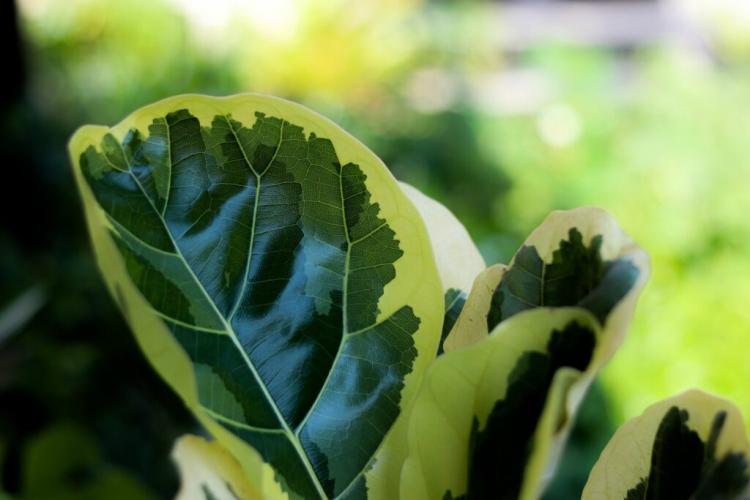
Ficus lyrata ‘Variegata’ has leaves with a white border [Photo: Raining624 / Shutterstock.com]
Planting Ficus lyrata: location, timing and procedure
In order to offer the violin fig a location that is adapted to its needs, it primarily needs light and warmth. Once the violin fig is in a suitable location, the little tree will flourish and not require much care. The plant should then no longer be adjusted or rotated, as it can react to changing lighting with leaf fall.
The violin fig tree likes to stand in a bright place where it gets sunlight, but can also grow in shady corners. Morning and evening sun are ideal, direct midday sun on the foliage of the violin fig should be avoided. The temperature is best around 25 ° C. Somewhat warmer or cooler temperatures are also okay for the violin fig, but it should definitely not be colder than 15 ° C. Make sure you have a location without drafts and with enough space on all sides so that the violin fig can unfold fully.
The violin tree does not need any special substrate; high-quality potting soil with a pH value between 6 and 7 is ideal. It should be permeable so that neither waterlogging nor dehydration occurs. Here, for example, we recommend our Plantura organic universal soil, which, thanks to the clay minerals it contains, can store the water without becoming wet. In addition, the earth is particularly sustainable and environmentally friendly thanks to the use of natural raw materials and no peat content.
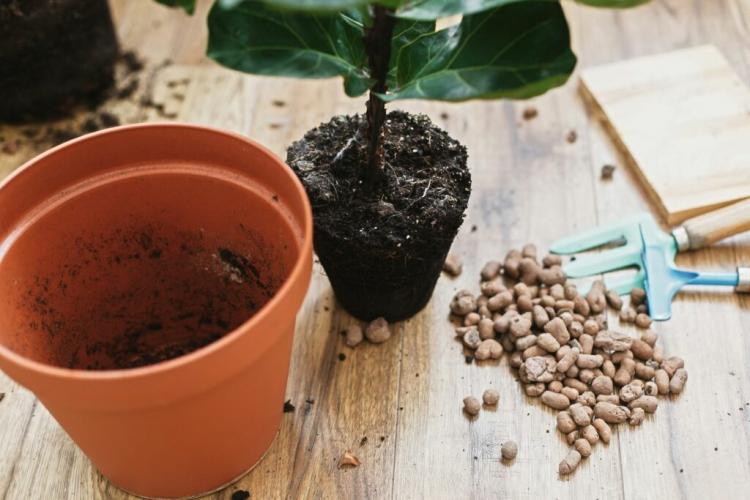
Pebbles or expanded clay on the bottom of the pot make sense so that the water can drain off well [Photo: Bogdan Sonjachnyj / Shutterstock.com]
Hydroponics in expanded clay is also suitable for the violin fig. This is recommended if you are often away from home or if you cannot water regularly. In hydroponics, the violin fig is held in place by expanded clay and can fetch the water with the roots from the planter itself. The water level indicator makes it almost impossible to water too much or too little. It is then also possible to give water in advance, for example before going on holiday. An appropriate hydroponic fertilizer is necessary to provide the plant with nutrients. Unfortunately, hydroponic fertilizers usually use mineral fertilizers, the production of which is usually energy-intensive and depletes finite soil resources.
The violin fig is particularly popular as an air purifier in the bedroom. It is important that a suitable location is selected here too, which offers enough space and is sufficiently bright.
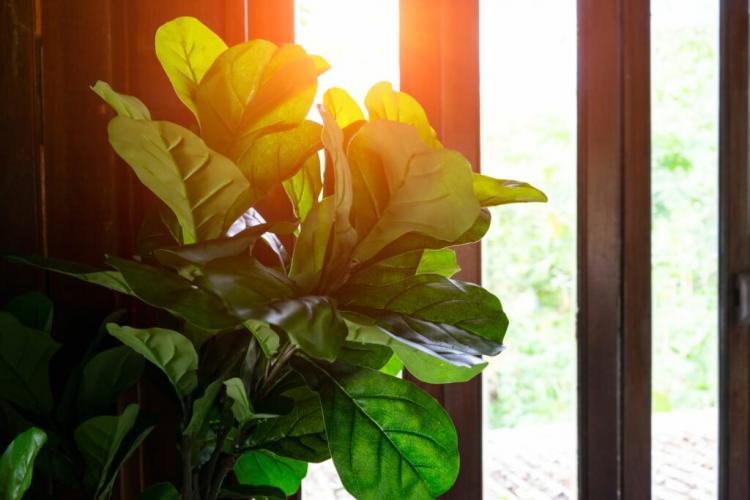
The violin fig should get a few hours of sunshine in the morning and in the evening [Photo: Stor24 / Shutterstock.com]
Tip: If you want the violin fig to look bushier, simply plant several specimens in a pot.
Care of the violin fig
Like any houseplant, the violin fig needs care so that it can continue to grow and stay healthy. The large leaves of the violin fig should be dusted regularly so that the plant continues to grow and stay healthy.
Water, cut and fertilize the violin fig
When watering the violin fig, it is important that the substrate is always moist, but not wet. As soon as the surface becomes dry, water should be added again. Since the violin fig loves warmth, especially at the roots, it is best to water with lukewarm water. Waterlogging must not occur, so draining water must be removed about 15 minutes after watering.
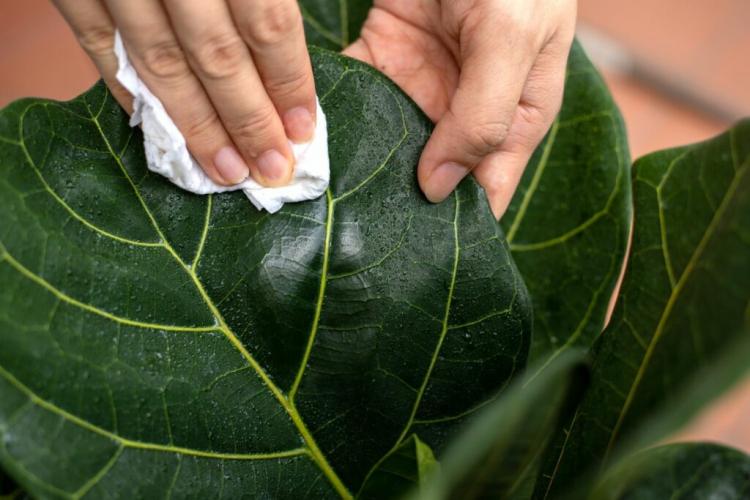
The large leaves should be cleaned of dust regularly [Photo: AngieYeoh / Shutterstock.com]
A cut is generally not necessary with the violin ficus. Sometimes, however, a pruning is desirable, as the violin fig can become very large. The plant can be shortened by cutting off the main shoot. It can also be raised to a high trunk by first shortening the main shoot to the desired height. At this point, new shoots form, the tips of which are cut off as soon as they have reached a length of about 30 cm. Over time, the violin fig should develop such a crown and then look like a small tree. The pruning measures should be carried out in spring so that new shoots can develop immediately afterwards. It is also advisable to wear gloves, as toxic milky juice can escape.
To fertilize the violin fig, it is best to use a high-quality green plant fertilizer. To promote the growth of the violin fig, for example, our Plantura organic indoor and green plant fertilizer is suitable, which is perfectly matched to the green foliage and the high nitrogen requirements of many ornamental foliage plants. Its composition supports the root growth as well as the development of the leaves. Adding nutrients every two weeks is sufficient during the growing season. In winter, the violin fig does not have to be fertilized and also less watered.
Violin fig has brown spots or is losing leaves: what to do?
The violin fig is losing leaves even though you did everything right when it came to caring for it? There can be different reasons:
Change of location : The violin fig is very sensitive to disturbances, which means that it is reluctant to be repotted, moved or turned. In this case it can happen that the plant has shed some leaves due to stress.
Waterlogging: The substrate of the violin fig must never be wet, otherwise it can lead to leaf loss. If waterlogging has developed, you should definitely repot the violin fig in fresh, dry substrate and reduce the amount of water when watering. Brown spots on the leaves also indicate waterlogging.
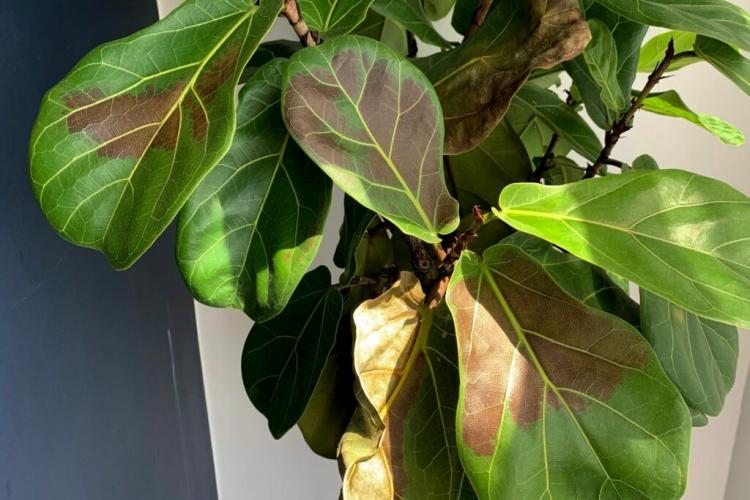
Too much direct light leads to “sunburn” in violin figs [Photo: Aryari / Shutterstock.com]
Fertilization: If the violin fig does not receive enough nutrients, this can manifest itself in a yellow discoloration of the leaf edges. In this case, you should fertilize more regularly.
Drought: If the violin fig shows wrinkled, dried-up leaves, it is receiving too much direct sunlight or is too dry. Check that the substrate is moist and protect the plant from direct midday sun.
Age and light : If green leaves are shed, the location may be too shady. If the leaf loss only occurs in the lower area, it is often simply due to the age of the plant. Cutting back can help here.

The fig likes it warm, especially in the root area. She shouldn’t be standing on cold ground [Photo: pornpan sangkarat / Shutterstock.com]
Fiddle fig branch: how to go about it
In order to branch the violin fig, the plant is cut back. To do this, the upper shoots are cut off with a sharp knife in the spring. Several new shoots then form at the interfaces, so that the violin fig grows more bushy. You can also use the separated shoots for propagation.
Propagate the violin fig
If you want to propagate the violin fig, there are several methods available. Spring is a good time to multiply.
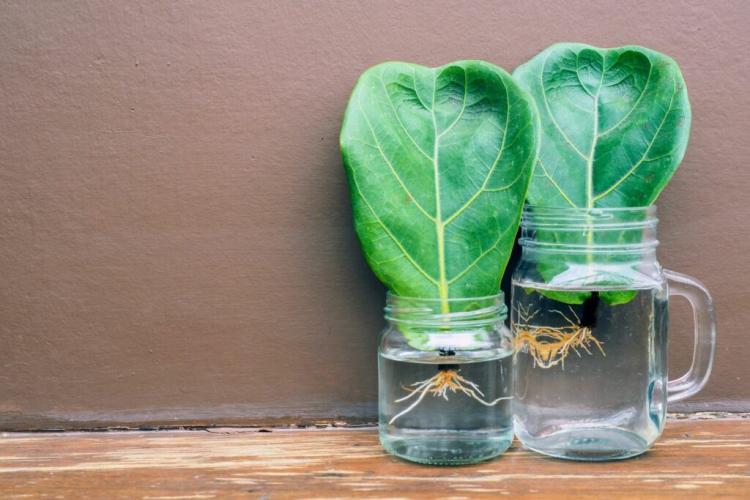
Propagation via leaf cuttings does not always succeed [Photo: onairp / Shutterstock.com]
Cuttings: Probably the easiest method is propagation by cuttings. To do this, cut off soft, unwooded shoots at an angle in spring with a sharp knife. To stop the milky juice from escaping, you can immerse the interface in water. Once the flow of sap ends, you can set the shoot aside to dry. Then the cutting can be placed in a pot with a mixture of one part soil and three parts sand. A cover made of cling film or a freezer bag ensures sufficient humidity. You should ventilate the film once a day to prevent mold from forming. Temperatures of 25 to 30 ° C, especially in the root area, are ideal for growth.
Leaf cuttings can also be used for propagation, but success is not certain. To do this, cut off individual leaves and place them in a water glass until roots have formed.

A bushy growth or a high trunk can be achieved through pruning measures [Photo: Paruay Leelawong / Shutterstock.com]
Mossing: Another method is the so-called mossing. For this type of propagation you need sphagnum moss. Mossing is also useful when the violin fig is to be shortened. The cut is made on the trunk or on a woody shoot, which must not be too thin. Here the trunk is cut diagonally from bottom to top towards the center of the trunk. If the shoot is bent slightly, a gap is created. Clamp a small stone in here to keep the gap open. The whole thing is wrapped with damp sphagnum moss and finally with cling film. After about four weeks you can see whether roots have formed, and then cut off the shoot entirely and plant it in.
Seeds: To propagate the violin fig by seeds, you can simply spread the purchased seeds over a little substrate and cover them lightly with soil. Covering with cling film will help increase the humidity. It should be ventilated regularly. Place the container at 25 ° C and keep the soil moist. It can take two weeks or three months for germination to occur.
Is the violin fig poisonous?
The violin fig is poisonous and should therefore not be kept in households with children or pets. Gloves are recommended when handling the plant.
A relative of the violin fig is the rubber tree ( Ficus elastica ). We give you all the important information about care and propagation.

